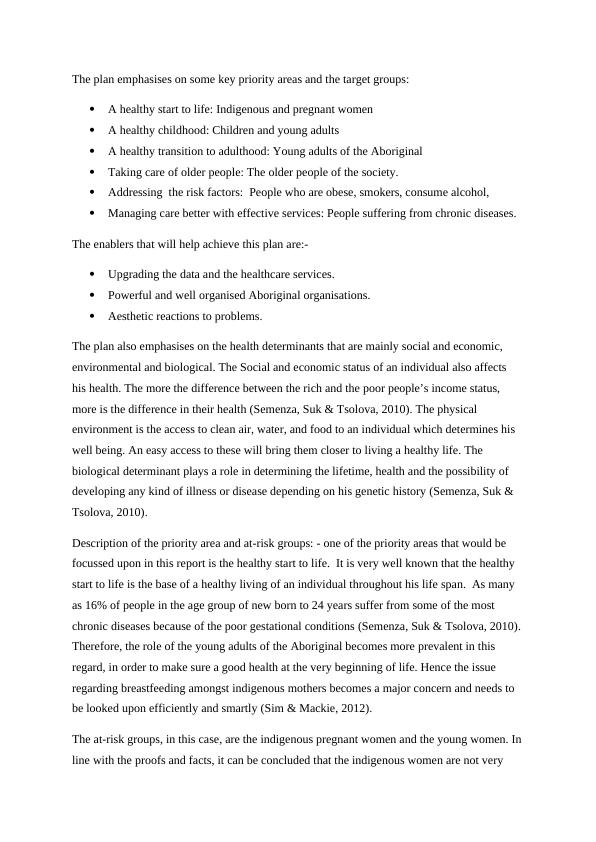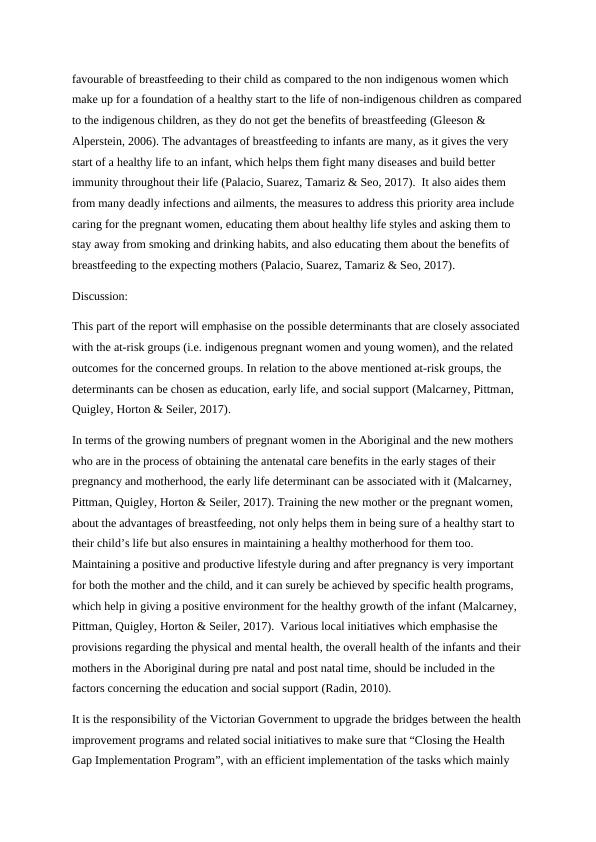Koolin Balit Health Plan: Priorities, At-Risk Groups, and Health Determinants
Koolin Balit Victorian Government strategic directions for Aboriginal health 2012–2022
6 Pages2016 Words104 Views
Added on 2023-06-14
About This Document
This report analyses the Koolin Balit health plan for Aboriginal Health in Victoria, its priorities, at-risk groups, and health determinants. It emphasises the impact of social and economic, environmental, and biological determinants on the health of indigenous pregnant women and young women.
Koolin Balit Health Plan: Priorities, At-Risk Groups, and Health Determinants
Koolin Balit Victorian Government strategic directions for Aboriginal health 2012–2022
Added on 2023-06-14
ShareRelated Documents
End of preview
Want to access all the pages? Upload your documents or become a member.
Understanding Health: Victorian Government's Strategic Directives for Aboriginal Health
|10
|1887
|74
Review of Koolin Balit: Victorian Government Strategic Directions for Aboriginal Health 2012-2022
|6
|2045
|130
Koolin Balit: Victorian Government Strategic Directions for Aboriginal Health
|8
|1955
|67
Koolin Balit - Policy Analysis
|9
|2620
|386
Understanding the Health of Aboriginal People
|10
|2595
|480
Understanding Health
|8
|1991
|57



